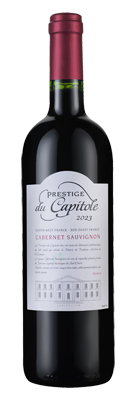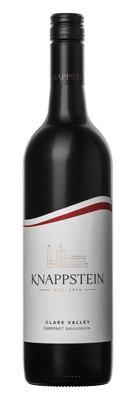Filter by
- High altitude, strawberry and spice rosé from close to Adelaide.$22.00 RRPfrom $19.99 when you mix 12+
- Darkly delicious Victorian Cabernet with Gold – courtesy of our wayfaring catador...$19.00 RRPfrom $13.99 when you mix 12+
- Blackberry and mulb erry-rich Cabernet from WA's always impressive Willow Bridge.$35.00 RRPfrom $27.99 when you mix 12+
- Fresh and appealing, 90pt Margaret River Cab Merlot combo. Great Value too.$22.00 RRPfrom $18.99 when you mix 12+
- "Wines like this would make Jim very proud of what his family is achieving... 96pts" (Winepilot)$50.00 RRPfrom $45.99 when you mix 12+
- Silky, fruit-laden, tobacco-scented Cabernet from a US winemaker, working her magic in SW France.$26.00 RRPfrom $17.99 when you mix 12+
- 97pt Cabernet Shiraz distinguished Aussie classic blend from Wrattonbully.$50.00 RRPfrom $37.99 when you mix 12+
- Gold-medal, 90pt Langhorne Creek Cab from cricket legend Ricky Ponting & award-winning Ben Riggs.$25.00 RRPfrom $23.99 when you mix 12+
- Nicely balanced, fresh Cabernet Sauvignon from Great Southern from the ‘Rogue Vintner.’$28.00 RRPfrom $23.99 when you mix 12+
- Enjoy the blackcurrant and cedar flavours in this distinctive 95pt Cabernet from Plantagenet.$45.00 RRPfrom $39.99 when you mix 12+
- Rob Dolan's 95pt, Gold-medal Cabernet flagship exudes modern elegance$38.00 RRPfrom $29.99 when you mix 12+
- A 94pt Barossa Single Vineyard beauty of “poise” and “complexity” from vines over 70 years old.$65.00 RRPfrom $45.99 when you mix 12+
- 95pt and Gold for Howard Vineyard's gently spiced flagship Cabernet$60.00 RRPfrom $52.99 when you mix 12+
- Gold, 95pt “… superb Cabernet, lasting and lush” (The Real Review). Organically grown in Mudgee.$50.00 RRPfrom $39.99 when you mix 12+
- Single Vineyard Cabernet 2022 with 2 Trophies including Best Cabernet at the Clare Valley Wine Show.$35.00 RRPfrom $32.99 when you mix 12+
- 92pt Cassis-laced Margaret River Cabernet, deep and intense: 'A really smart wine for the money'$25.00 RRPfrom $19.99 when you mix 12+
- Classy Margaret River Cabernet Sauvignon Reserve with two 95 point scores!$59.99 RRPfrom $55.99 when you mix 12+
- Gold-medal, 93 & 92pt Clare Valley Cabernet Sauvignon from Knappstein.$25.00 RRPfrom $18.99 when you mix 12+
- The 2nd vintage of an extremely limited 'Barrel Select' Cabernet from Greg Follett.$30.00 RRPfrom $27.99 when you mix 12+
- Enjoy cassis, plum and baking spice Cabernet from the rich red soils of the Limestone Coast.$21.00 RRPfrom $14.99 when you mix 12+
- A luscious South Australian Cabernet showing all the intensity that you know and love.$22.00 RRPfrom $14.99 when you mix 12+
- It’s Gold for this delicious Coonawarra Cabernet named to honour Johnny Q's Mrs!$25.00 RRPfrom $17.99 when you mix 12+
Wine FAQs
What is Cabernet Sauvignon?
Cabernet Sauvignon is the world’s most widely planted red wine grape. It’s grown in nearly every major wine-producing country among a diverse spectrum of climates.
Known for its thick skin and deep purple colour, it yields robust and fruity red wines, with flavours of black cherry and blackcurrant. Cabernet Sauvignon stands out for its structured complexity and potential for ageing. Some Bordeaux blends can age 20 years or more, making them highly sought-after wines.
Cabernet Sauvignon originated in the Bordeaux region of France in the 17th century. It was the result of an accidental breeding between the red Cabernet Franc grape and a white Sauvignon Blanc grape – and winemakers quickly recognised the potential of the new hybrid.
Cabernet Sauvignon remains the most famous grape in Bordeaux, particularly in the Left Bank areas like Médoc and Graves. Iconic wines made from Cabernet Sauvignon include those from Château Lafite Rothschild, Château Latour and Château Mouton Rothschild.
The grape is highly adaptable and thrives in various climates, making it a favourite worldwide. Today, Cabernet Sauvignon is grown in nearly every winemaking country, with a wide range of premium Cabernet Sauvignon grown in Australia.
Where is Cabernet Sauvignon grown?
Despite its origins in Bordeaux, France, Cabernet Sauvignon’s adaptability to various climates and terrains has allowed it to thrive in wine regions worldwide.
Some key locations worldwide include:
- France: The renowned Bordeaux region, particularly the Left Bank, is the original home of Cabernet Sauvignon. Wines here are known for their complexity, longevity and flavours that blend dark fruits with earthy and floral notes.
- Argentina: Nestled in the Andes, the high-altitude vineyards of Mendoza are an ideal setting for Cabernet Sauvignon to thrive. This results in wines characterised by their elegance, balanced acidity and concentrated flavours.
- Chile: Cabernet Sauvignon wines from Chile are famous for their fresh fruit taste and noticeable mineral flavour.
- South Africa: Stellenbosch’s historic vineyards offer Cabernet Sauvignon wines that merge New World fruitiness with Old World structure and elegance. It’s a testament to the region’s rich winemaking tradition.
- United States: Napa Valley and Sonoma County in California are known for producing Cabernet Sauvignon wines. These wines are famous for their intense fruit flavours, full body and smooth tannins.
Cabernet Sauvignon is grown in several regions within Australia and New Zealand, including:
- Coonawarra, South Australia: Known for its ‘terra rossa’ red soil over limestone, this region produces Cabernet Sauvignon with deep fruit flavours often described as blackcurrant and mint.
- Margaret River, Western Australia: Their Cabernets are renowned for their elegance and balance, often combined with blackcurrant flavours and notes of bay leaf.
- Barossa Valley, South Australia: The Cabernet Sauvignons here are typically rich and full-bodied with ripe, concentrated fruit flavours.
- Yarra Valley, Victoria: Creates more medium-bodied Cabernets, often with notes of blackcurrant, green bell pepper, mint and cassis.
- Hawke’s Bay, New Zealand: The warm climate and diverse soils result in full-bodied Cabernet Sauvignon wines with ripe black fruit flavours and a hint of spice.
- Waiheke Island, New Zealand: The warmer maritime climate of this island near Auckland allows Cabernet Sauvignon grapes to ripen fully, producing rich, full-bodied wines with ripe tannins.
What is Cabernet Sauvignon’s style and character?
Cabernet Sauvignon really stands out for its unique style and character. Whether on its own or mixed with other grapes, these hardy grapes create robust, dry red wines full of flavour, with noticeable tannins and high acidity.
Depending on how the wine is made and where it’s from, Cabernet Sauvignon can taste very savoury or very fruity.
But what really makes Cabernet Sauvignon special is how well it ages. Over time, a well-made young Cabernet Sauvignon can become a superb mature wine. This change brings out a rich texture, complex layers of flavour, and subtle hints of oak.
What does cabernet sauvignon taste like?
Cabernet Sauvignon is known for its rich fruit flavours, such as black cherry and blackcurrant, with subtle hints of cedar, spices and graphite. This grape variety is known for its unique ‘green’ flavour, reminiscent of green peppers caused by a specific group of aromatic compounds in the wine. In fact, Cabernet Sauvignon wines from Australia’s Coonawarra region are known to exhibit a unique menthol note, adding to their distinct character.
The taste of Cabernet Sauvignon can be influenced by the region where it is grown. The wine is typically medium-bodied in cooler regions like Bordeaux, with higher tannins and acidity. Such wines exhibit flavours like anise, black pepper, blackberry, liquorice, plum and violets.
Cabernet Sauvignon wines for warmer regions like South Australia are known for their rich, bold flavours. These wines have lower tannins and acidity levels, resulting in prominent jammy fruit and spicy notes.
How to choose a good Cabernet Sauvignon
Choosing a good Cabernet Sauvignon depends on how much acidity, tannins, body and flavour you prefer.
If you’re looking for a robust, full-bodied wine with pronounced structure and vibrant acidity, consider a Cabernet Sauvignon from Barossa Valley or Hawke’s Bay, New Zealand or as would an aged bottle from Coonawarra.
On the other hand, if you prefer a softer, fruitier Cabernet Sauvignon, you might want to consider a wine from Yarra Valley. Cabernet Sauvignons from this region tend to be more approachable in their youth and don’t necessarily require extensive ageing to be enjoyed.
How to serve Cabernet Sauvignon
Enjoy Cabernet Sauvignon at its best by serving it at room temperature, around 16-18°C. Cooler temperatures can suppress the wine’s aromas and flavours, while warmer temperatures can make the wine taste too alcoholic.
Most Cabernet Sauvignon benefits from decanting. Decanting the wine allows it to breathe and can help soften the tannins. Pour the wine into a decanter and let it sit for 30-60 minutes before drinking. When serving, use a large red wine glass to allow the wine to aerate and enhance its aromas and flavours.
What foods pair well with cabernet sauvignon?
Cabernet Sauvignon is a full-bodied red wine that pairs well with rich, hearty dishes. Its high tannin content and complex flavours can stand up to and are complemented by robust and flavourful foods. It’s a great match for juicy steaks, tender lamb, beef pies or game meats like duck, enhancing their robust flavours.
Cabernet Sauvignon is definitely worth trying with vegetarian dishes. It pairs beautifully with hearty dishes like creamy mushroom risotto or flavour-packed bean stew, creating a delightful harmony of taste. Strong cheeses like vintage cheddar can hold their own against Cabernet Sauvignon.

























